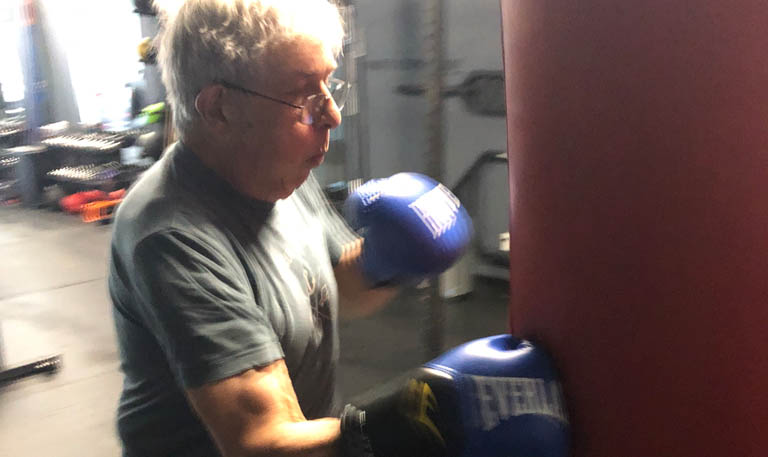This article appeared in the Fall 2022 issue of 3rd Act magazine.
BY MIKE HARMS, Fall, 2022.
“My father died at 69,” Jack says. “He was grossly overweight, had an unhealthy diet, smoked, and never exercised. After I reached 60, I accepted that if I didn’t make some major life changes, I was headed in a similar direction. I was overweight, had high blood lipids, and I was addicted to tobacco.”
Today, at 79, Jack is one of my fittest personal training clients of any age. In a typical week, Jack does an hour of Pilates, strength trains for two hours, bikes 30-40 miles, and plays tennis for 5-6 hours. He also practices piano for 1-2 hours per day.
Jack’s inspirational transformation exemplifies what’s possible when we take ownership of our fitness.
Establishing a baseline
Jack’s life-changing fitness journey started with a full physical exam, including a cardiac stress test. Getting a physical before starting a new exercise program is always prudent. It helps ensure that our bodies are ready for additional work, plus it can help establish safe exercise parameters, and it provides a baseline from which we can measure future progress.
Jack joined a gym and hired his first of four trainers. In my experience, clients get the most out of personal training when they’re humble, committed, and open to coaching. Jack personifies these traits—he rarely misses a session, he welcomes feedback, and he works hard.
His efforts paid off. Jack’s strength, appearance, and well-being improved noticeably over time. “My progress was obvious and it was highly motivating,” Jack says. Subsequently, his annual physicals revealed improvements in fitness and health, as well as decreased risk for a variety of disease.
Empowerment through knowledge
Jack is an MD hematologist/oncologist who spent the last 20 years in biopharma developing new drugs to fight cancer. He holds 15 patents and authored more than 290 scientific publications. He is retired but remains a consultant to biotech companies.
Personally, and professionally, he believes in the health benefits of strength training.
“Rigorous strength training allows the body to use insulin more efficiently and minimizes the risk of diabetes,” he says. “It improves blood lipids and decreases measures of ongoing inflammation, major risk factors for cardiovascular disease. Most surprisingly, maintenance strength training decreases the incidence and likelihood of recurrence of multiple cancers.”
Exercising for life
Jack’s fitness from strength training allowed him to improve at other activities he enjoys, including biking, tennis, and classical piano.
“Goals I set for my 80th birthday are to play a decent tennis game …” Jack says. “I’ve made major strides over the past year. I can move around a tennis court in a manner I couldn’t do 20 years ago. I have good hand-eye coordination. My core strength allows me to have a strong serve, a good ground stroke, and I’m able to rally at the net.” (Another goal: perform a credible piano recital of difficult works.)
By combining a consistent strength training program with regular aerobic exercise and working with his physician to decrease risk factors associated with diseases of aging, Jack is confident that he—and others—can maintain an active lifestyle into their 80s and beyond.
And so, the journey continues.
Mike Harms is an author, coach and owner of Muscle & Hustle gym in Seattle.
